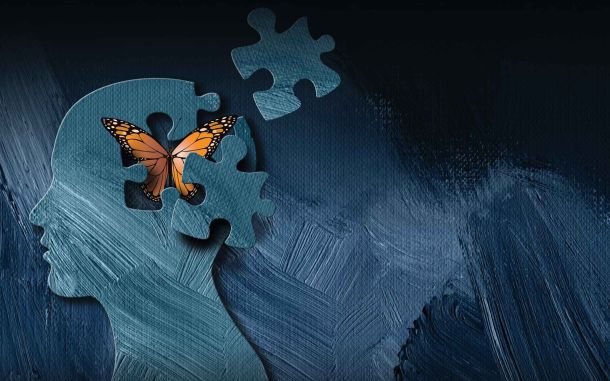Sea Sheep

In This Article
-
Sea or leaf sheep is a type of sea slug that runs in its body a process called kleptoplasty, by which it utilizes the energy of light and obtains food—a process normally reserved for plants.
-
Sea sheep are remarkable for their close-set, black, beady eyes, horn-like appendages resembling sheep’s ears, and dotted green cerata protruding from the upper surface of their bodies.
Sea sheep is a cute and cuddly animal, which could have been appropriately called “leaf sheep,” for it really looks like a sheep among lush green leaves. It is also called the solar periwinkle. What is unique with it is that photosynthesis, an event unique to the plant kingdom, takes place in this its body.
This tiny inhabitant of the seas (Costasiella kuroshimae) is a type of sea slug that runs in its body a process called kleptoplasty, by which it utilizes the energy of light and obtains food—a process normally reserved for plants. This is not a usual way for an animal to survive. It is an exception that does not only show the variety within creation but also lifts the veil of what could be perceived as monotonous in the universal order and regularity within the universe [1].
A marvelous phenomenon: Kleptoplasty
Kleptoplasty is the process by which a creature that cannot photosynthesize feeds on another photosynthesizing creature and moves some chloroplasts from that creature into its body for storage [2]. This unusual phenomenon occurs in some creatures that feed on algae, usually microscopic or macroscopic algae.
Some sea slugs, like the sea sheep, also feed on macroscopic algae. They retain only the chloroplasts of the seaweed Avrainvillea and store them in specialized cells in their digestive tract. The rest they digest completely [3]. They can keep these chloroplasts in their bodies for 10 months or much longer. The chloroplasts retained are used for photosynthesis to meet the sea sheep’s energy needs, as well as for food production and storage.
While we cannot claim that sea sheep and sea snails photosynthesize themselves, we can say photosynthesis takes place in their bodies. Through the chloroplasts hosted in their bodies, they photosynthesize through the phenomenon of kleptoplasty. With such a marvelous mechanism, light is transformed into nutrients and provides the tiny sea sheep with sustenance.
Several key experiments were carried out on the functional dimension of kleptoplasty, and the contributions of kleptoplasts—i.e., chloroplasts—to the living host [4]. The experiments suggest that chloroplasts function as a “pantry” that helps organisms survive periods of starvation, even when their photosynthetic activity is blocked. In addition, these studies revealed that kleptoplasts from algae remain functional in the cytosol of an animal cell for a long time.
A closer look at the sea sheep
Sea sheep belong to the Costasiellidae family of mollusks, a class of gastropods. After arthropods, mollusks are the second most diverse branch of the animal kingdom, with about 93,000 known species [5].
These creatures are rather tiny, ranging in size from five millimeters to one centimeter. First discovered in 1993 near the coast of the Japanese island of Kuroshima, the sea sheep (Costasiella kuroshimae) are prevalent in the waters of Japan, the Philippines, and Indonesia [6].
As is common in other mollusks, their bodies comprise three main parts: the muscular foot, the internal mass—which contains the viscera—and the mantle, which covers the internal mass. The organs called radula are vital in transporting food. Like a grater with small teeth on it, this organ is designed for scraping, and it allows them to rasp their food into their bodies.
Sea sheep have fascinated ocean researchers and divers since they were first discovered. Researcher Ara Juan said that when he first saw the creature in the Philippines, he was surprised by how tiny it was. Later, on his second encounter, he saw five of them perched on a leaf and likened them to sheep grazing on a field of algae [7]. These creatures have a world of their own, which they build on the algae leaves and in which they spend their entire lives. Occasionally you can even see their eggs laid in an impressively neat, measured spiral on the seaweed. The eggs, arranged as if drawn with a ruler, are a magnificent sign that the world is created with inimitably precise and delicate measurements.
Sea sheep are remarkable for their close-set, black, beady eyes, horn-like appendages resembling sheep's ears, and dotted green cerata protruding from the upper surface of their bodies. Cerata are leaf-like structures with pink, purple, or white tips, similar to those of the aloe vera plant, and contain branches of the digestive gland. The guest chloroplasts involved in photosynthesis are also held in the cerata.
Besides these specific organs, the two tentacles on the back of the head, acting as chemosensors, have also been exclusively created and equipped. These act as the olfactory sensors of this sea slug, enabling the animal to find food sources by picking up and analyzing chemical signals in the water.
Several comparative studies have also been carried out on various species of Costasiella living on algae of the genus Avrainvillea [8]. It was observed that the eyes of the sea sheep were larger than those of the other species and were between two large tentacles extending like horns. When the ceratas were examined, it was found that they were orange and iridescent blue spotted, tapering from two ends, and containing albumin glands. For each species, all these organs are individually engraved and decorated with different colors and patterns.
What a precious grace it is for us to observe such astonishing works of creation, which are paraded before our eyes in the depths of the sea. Just as the sea sheep is provided with sustenance from the chloroplasts, we are provided with the sustenance of knowledge of the One who creates all of it for us, perhaps wrapped in concentric layers of meanings in one of which is the sea sheep found.
Notes
- Bediuzzaman Said Nursi, Addendum to the Sixteenth Word, The Words, Risale-i Nur Collection
- https://www.ncbi.nlm.nih.gov/pmc/articles/PMC3949400/
- https://www.science.org/doi/10.1126/sciadv.aaw4337
- Gregor Christa, Sven B. Gould, Johanna Franken, Manjavleugels, Dario Karmeinski, Katharina Handeler, Wiliam F. Martin And Heike Wagele, Functional Kleptoplasty In A Limapontioidean Genus: Phylogeny, Food Preferences And Photosynthesis In Costasiella With A Focus On C. Ocellifera (Gastropoda: Sacoglossa), Journal of Molluscan Studies (2014) 1–9. doi:10.1093/mollus/eyu026
- https://ekog.org/2020/12/26/yaprak-koyunu-costasiella/
- https://en.wikipedia.org/wiki/Costasiella_kuroshimae
- https://www.bbc.com/travel/article/20210324-the-odd-sea-creature-powered-by-the-sun
- Kathe R. Jensen, Patrick J. Krug, Anne Dupont, Masayoshi Nishina, A review of taxonomy and phylogenetic relationships in the genus Costasiella (Heterobranchia: Sacoglossa), with a description of a new species, Journal of Molluscan Studies, Volume 80, Issue 5, December 2014, Pages 562-574, https://doi.org/10.1093/mollus/eyu048









